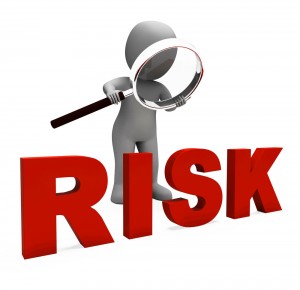13 Ways You’re at Risk from Lead
 Lead, one of the oldest metals known to man, is right up there among the top of construction work health dangers.
Lead, one of the oldest metals known to man, is right up there among the top of construction work health dangers.
It’s just such a common material, still in wide use today even though it can do some pretty unpleasant things to our bodies. Headaches, nausea, stomach pains and anemia are the lighter of lead poisoning symptoms.
It can also give you kidney damage, nerve damage, brain damage or infertility.
Watch What You Eat, or Breathe
Basically, don’t let lead get into your body in any way.
If you breathe in lead dust or vapour, or swallow even the tiniest traces of lead from eating, drinking, smoking or even biting your nails without washing your hands after dealing with lead or lead dust, you’re at risk.
So here are the 13 processes working with lead which create the dust, vapour or fumes to watch out for. Many of which are common on construction sites. And then, 10 ways to keep yourself safe.
- Recovering lead from scraps of waste
Lead’s valuable, and useful, and endlessly recyclable. So we often recover it from waste, where careless touching gets it on your fingers.
- Hot cutting lead during dismantling or demolition
Also a very common process, watch out for all those fumes released.
- Burning and blast removing old lead paint
A highly dangerous, and very common practice.
- Stripping doors, windows and other things of old lead paint
Another common construction and renovation job.
- Soldering, and other work with metallic alloys which contain lead
Antimony, tin, arsenic, and calcium are the most common alloying elements. Lead adds a hardness and strength to other materials. And a danger too.
- Sometimes painting buildings
Check all paint for lead.
- Sometimes spraying vehicles
Again, always check for lead and follow the safety steps below.
- Lead refining, smelting, alloying and casting
Now onto the less common lead-processes on a construction site, but the most dangerous ones for any worker to do. Of course refining, smelting, alloying and casting release the most dangerous fumes.
- Manufacturing lead compounds
Most commonly, in the manufacturing of batteries.
- Manufacturing or recycling lead acid batteries
A very common process, lead is often used in batteries.
- Manufacturing leaded glass
- Using pigments, colours and ceramic glazes
Surprisingly, these products often contain lead.
- Recycling some computer monitors and televisions
Any television or computer monitor with a cathode ray tube inside has traces of lead. Bet you didn’t know that one!
So now we’ve gone and scared you with how often you come into contact with lead in a dangerous way, here are the steps to take to make sure you needn’t worry. And like most health and safety, just being aware helps a great deal.
10 Steps to Staying Safe from Lead Poisoning
- Make sure you’re properly educated about how to work with lead
- Use well-fitting, high quality, good condition safety equipment, and follow the instructions
- Keep your work area clean, tidy and free of lead scraps and dust
- Clean away any lead waste at the end of every day – don’t leave this toxic stuff lying around!
- Wash and clean protective clothing and equipment right there on the site, don’t take it home
- Once you’ve done with it, return it to the designated storage place on site (your employer should provide. And if you’re the employer – organize this!)
- Don’t ignore any damage to equipment, report it and fix it
- Don’t eat or drink anywhere near lead, designate safe, lead-free areas
- Have regular medical appointments with your doctor
- Be hygienic! Wash your face, hands and nails before eating and wash and shower before you go home. Enforce this behaviour with your workers.
The HSE has put out a detailed guide to lead, you can buy it here
Do you have any questions about working with lead?
Ask away, we’re happy to talk!

A chartered (fellow) safety and risk management practitioner with 20+ years of experience. David provides a healthy dose of how-to articles, advice and guidance to make compliance easier for construction professionals, Architects and the built environment. Get social with David on Twitter and Linkedin.




One Comment
Hi,
I am a HSE officer.I want to know where lead generates or produce and what is the control measures to prevent from diseases.